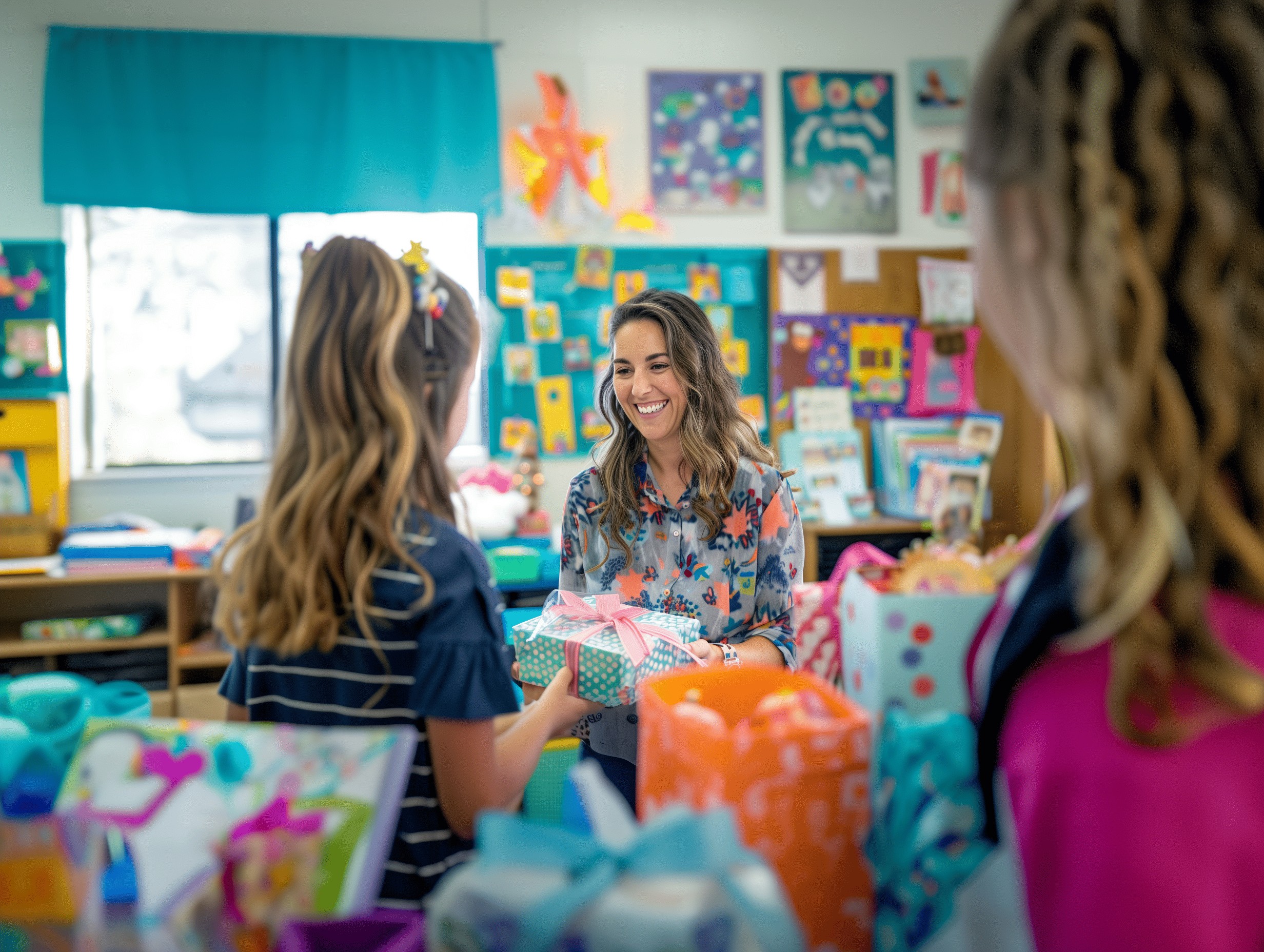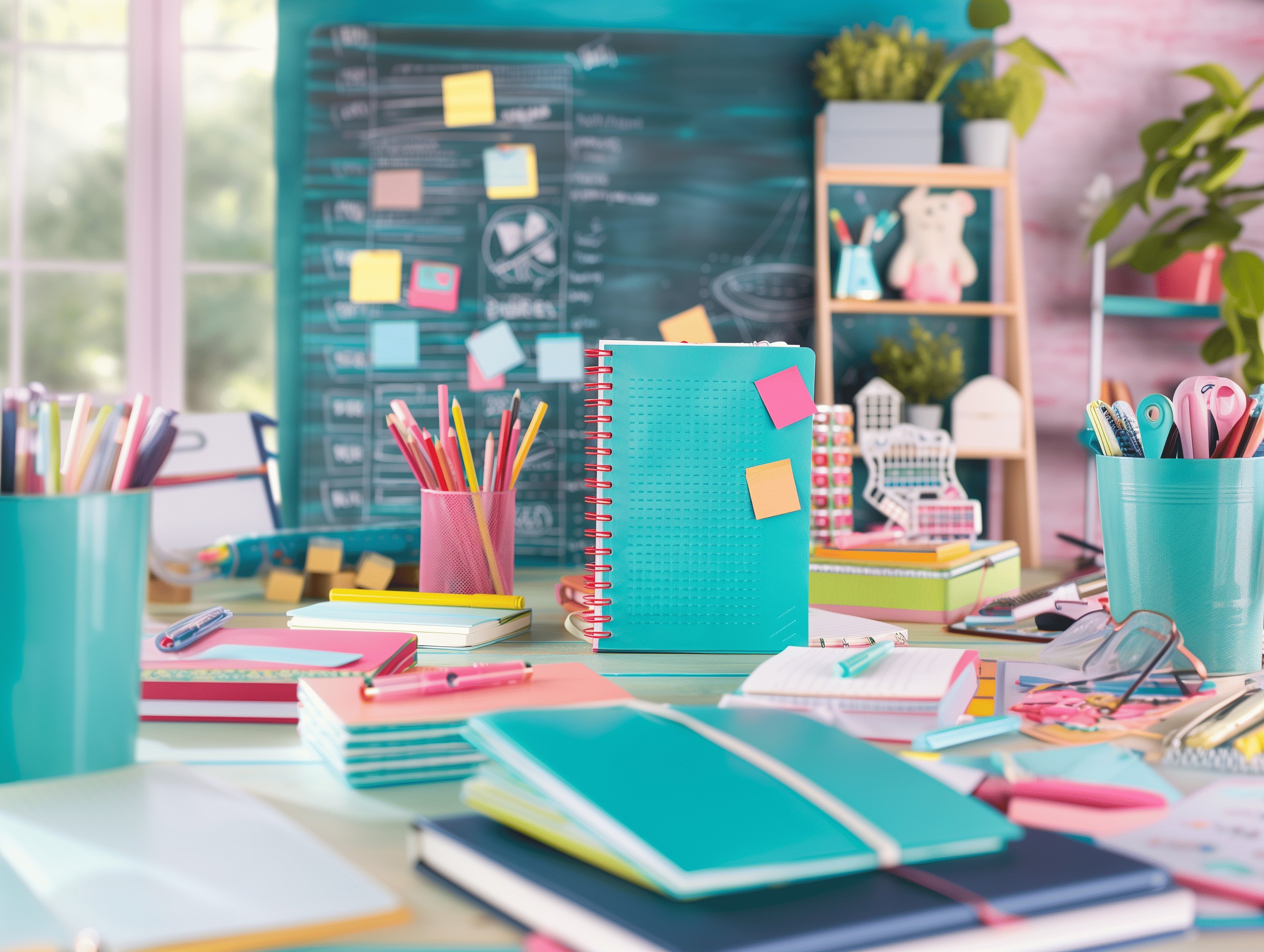Teacher's Workshop |
Relational Discipline Strategies
Contributed By Dr. William Bender
(The following strategies are offered as a supplement to Dr. Bender's many workshops on this topic. They are taken from his new book, Relational Discipline: Strategies for In-Your Face Kids, to be published sometime in 2001. The pages below may be printed out for personal use.)
The Basics
The Techniques
1. Responsibility Strategies
2. Mentoring
3. Peer Confrontation
4. Television Monitoring
The Basics
1. When a teacher, parent, or paraprofessional engages in a power struggle with a student, the student will always win. While the adult may be able to eventually elicit compliance, the student has controlled the situation.
2. Always avoid power plays. Don't accept the challenge from the student. Have a series of options available for use when a student begins a power play.
3. Structure your interactions with students around mutual respect. Find ways to single out the most difficult students for something positive, and expect the task of building rapport with the students to take some time.
The Techniques
Use various defusing techniques to escape from the building power struggle. These include the following:
Repetitive Instructions. If a student, in anger, shouts that he or she won't do an assignment, merely repeat the instructions in a calm voice two or three times each time the student challenges you. Use a quieter voice each time, and call the student's name. After 3 repetitions, merely turn, walk away, and begin to assist another student.
Humor. Allow yourself to joke about noncompliance. Statements such as, "Well, that's one way to go."
Inquire about a student's anger. "I can see that the assignment upsets you. Is it something we can talk calmly about? We can return to that assignment later." You would rather have a brief discussion about the student's concern, and then return to the assignment, than have an escalating power struggle.
Share Power. If a student challenges you on an assignment or task, and mentions something else he or she would like to do, be prepared to negotiate, and share power concerning when the tasks are done.
Postpone the Discussion. If a student is highly emotional (i.e. very angry, upset), let the student know that you want to discuss that with him/her, but that the discussion may only be held at the end of the period, when your time is free. Sometimes, merely knowing that a caring adult in the setting is interested can defuse a building problem.
1. Responsibility Strategies
The "Responsibility Strategy" or, more appropriately, the responsibility strategies, focus on a student's connection to his or her school. Often when administrators and teachers have a disciplinary problem it seems that they had to deal with the same type of problem yesterday (or only 15 minutes ago) from the same student. Students who are constantly in the principal's office for misbehavior are good candidates for the use of the responsibility strategy. When an educator sees a kid repeatedly in trouble, it is often effective to mentally take several steps back and ask....
"How has this student been invited to positively contribute to this school (or this class) today?
In some cases, the answer is probably that the student hasn't been effectively invited to make an appropriate contribution. Still, kids will get the attention they require, and if getting the required attention leads to misbehavior, so be it. A wise educator will try to find ways to involve a kid -- to make him or her feel special -- by inviting the kid to contribute in an appropriate way. Some examples illustrate the point.
The Lightbulb Monitor
Dr. Bob Brooks, as a former principal of a lock-door school unit in a psychiatric hospital for difficult kids, tells of a kid who broke out every lightbulb he could find. All lights were fair game, and he really didn't care what disciplinary measures were used to punish him. This was, quite blatantly, an attention getting misbehavior on the part of the student.
To Dr. Brooks' credit, he took a chance and made that student the "Light Bulb Monitor" for the school. Each day, the kid was encouraged to roam the halls and visit each room during a homeroom period and assure that each and every lightbulb was working properly. Of course, the kid loved going into a room of his peers, filled with his own importance, and switching on the lights several times, while the teacher checked the roll. The point is, that kid had a responsibility for perhaps the first time in his school career -- a meaningful contribution to make to the school.
Use These Kids In Tutoring? You've Got To Be Kidding!
Dr. Charles Maher, of Rutgers University, reported several research studies in which adolescent males with bad behavior records were used as tutors for students with other disabilities in lower grade levels. This took courage, because some may assume that the "Bad Boy" adolescents in middle and junior high may actually victimize the students in grades 2 or 3. Instead, the opposite occurred. The behavior problem adolescents began to "own" their tutees -- to "protect" them on the playground, and to play with them. The number of disciplinary problems for the adolescents went down drastically, and their tutoring did assist the tutees academically. In fact, Dr. Maher repeated this experiment, just to assure that the first results were valid -- the results of the second project were the same. Of course, with limited academic skills themselves, the tutors would not have been appropriate for use as tutors of same age peers, but using these kids as tutors of much younger children on simple reading tasks worked like a charm. Again, the adolescents were invited to contribute something -- they were given a responsibility which they thought important.
Giving a Behavior Problem Kid Some Responsibility.
Most of us remember dusting the erasers, or cleaning the blackboard for teachers, or doing other teacher's helper jobs. We can remember how special, how important, those mundane things made us feel. Of course, the behavior problems kids in our classes didn't get to do those jobs, because of their misbehavior. Still, with some kids, offering an attention generating responsibility will be just the ticket to turn negative behavior into positive behavior. The options are almost endless -- this is why we refer to the responsibility strategies -- in the plural. The task that kids are assigned is relatively unimportant, and almost any necessary task will do. What is important is that the kid be made to feel like a contributing partner. Here are some suggestions.
Help kid tutor in another class
Have the trash cans emptied
Have a kid work as a peer buddy
Set up a "Clean Room" committee
Use as a "helper" for you
Use a kid as Playground Monitor
What Is the Right Responsibility?
How can an educator find the "Right" responsibility for a troublesome student? Often the student's actions will tell you. For example, the kid described above was fixated on light bulbs, and the role of lightbulb monitor was perfectly appropriate for him. Try to have some insight into a student's hobbies. Does your school need pictures taken? Could you use someone to report gang graffiti? You should consider issues such as confidentially (i.e. don't appoint a "bathroom monitor" unless you want some kid peeking into stalls), as well as legal liability (No student's responsibility should require that he or she leave campus, etc.). Also, students may need to be supervised the first few times they try out their responsible role.
With these concerns in mine, be as creative as necessary; but remember; when students can't get the attention they require through positive means, they will always --- and I do mean always --- get it in some fashion, usually through negative behavior. The use of the responsibility strategy can save you a great deal of grief!
2. Mentoring Tactics
Mentoring involves pairing adult mentors from the community with students who are at risk. The available research documents that mentoring can help reduce school discipline problems and juvenile delinquency.
Setting Up A Mentoring Program
1. Identify a theme and a place to meet -- a mentoring room.
2. Provide training for mentors.
3. Provide guidelines & goals for mentors to work towards.
4. Facilitate communication between teachers & mentors.
5. Facilitate off-campus activities, based on mentor's responsibility.
6. Provide opportunities to show mentors appreciation.
Other Issues
Grandparent Factor
-- How often do kids at risk have someone at home proud of them? -- Search for mentors from older persons -- Be prepared for mentors to want to "own" kids -- Emphasize limitations of mentoring
Mentor Training
-- usually 2 or 3 evenings is enough; provide orientation -- should include police screening -- train them for the occasional failure -- train them to do academics for at least the first 5 to 6 meetings with a child, then go to hobbies -- Set up off campus mentoring at the discretion of the parents and mentors (i.e., school is uninvolved)
Selecting Students
-- Mentoring is effective with kids with serious problems but not the kids with the most serious problems-- Kids are usually more "reachable" between fourth and eighth grade, and most mentoring programs begin in those years
3. The Peer Confrontation Strategy
When Should I Try It?
Peer Confrontation is a strategy which is appropriate for many middle school, junior high, and high school students. As students reach the middle grades, peers become increasingly important as a referent for behavior (whereas parents, teachers, and other adults provide this referent during the earlier years). For this reason, students who misbehave may be rewarded by peer group admiration, and this can lead to increased behavior problems. If you have students who are "playing off" the attention of other students in your class, and you wish to get the audience for misbehavior working for you rather than against you, this is an appropriate strategy. This strategy is used for three reasons:
1) to remove the audience for inappropriate behaviors,
2) to elicit the appropriate behavior through the use of mild peer pressure, and
3) to help students develop an understanding of their own behavior.
What Do I Do First?
When a student consistently interrupts class or demonstrates a problematic behavior, the teacher should take some type of baseline data. This technique is appropriate when a student demonstrates the misbehavior a number of times during a single day (say 8 to 15 misbehavior). A simple count of the frequency of the misbehavior during a particular class over a five day period will provide enough data to demonstrate the problem behavior.
The Intervention
On the day after baseline data is completed, when the student demonstrates the misbehavior for the first time, the teacher begins the technique through use of questions which are intended both to defuse the situation and elicit the assistance of the class in analysis of it. The sample dialogue below provides examples of what the teacher is to say when "Jason" demonstrates a problem behavior, and the types of responses that students may give. In a voice which is loud enough to get every student's attention, you should say...
"Wait a minute, everyone. We just saw an inappropriate behavior. What problem behavior did we all just see?"
The focus should be on the misbehavior and not who did it. Other statements to use may include.....
"We're going to stop class right now because something important just happened. Can anyone describe the behavior problem that just happened, please? Raise your hand if you can."
The desired response is to have the students describe the behavior accurately without criticizing the student. If the first remark is overtly critical, the teacher should respond with a caution about criticism and a desire to assist the student who just demonstrated the behavior problem.
Next you should focus on why a student may do that misbehavior.
"Can anyone guess why someone may do that misbehavior?"
You want the class to participate with you in stating reasons for the misbehavior (i.e. attention seeking, can't do the work so he or she misbehaves, etc.). You now have the class critically analyzing a misbehavior rather than snickering.
"Can we suggest other behaviors?"
"We are not here to criticize anyone, but we do want to help everyone control their temper. Can someone suggest what Jason may want to do when he feels he is getting angry?" The teacher should elicit responses like, "Put his head down," "Turn away," or "Walk back to his seat."
"Would you like to try doing that with the help of the class?" At this point the teacher addresses Jason and asks, "Jason, would you like to try that instead of (whatever the problem behavior is)?" Your goal is to try to elicit the student's cooperation.
Suggestions To Make This Work In Your Class:
1) In some cases, it may be necessary to talk with the student after class, show him or her the baseline data, and encourage willing participation.
2) Share the project with the principal and the parents as soon as the student chooses to cooperate.
3) If the student becomes highly uncomfortable and indicates that he or she feels the project is an effort for the class to "Gang up on me," discontinue the project and select another procedure. The intent is to get a student to think objectively about his or her behavior and not to overtly embarrass a student.
4) Use this strategy with students with overt conduct problems, including aggression, as long as the student is not explosive.
4. Television Monitoring of Behavior Problems
Many students with moderate conduct problems are not aware of the effect of their conduct problems on the classroom. If a specific behavioral problem can be identified, one effective strategy is to call a student's attention to the conduct problem in two mutually supportive ways: (1) charting the occurrence of the behavior problem and (2) using a television camera as a means of displaying a student's behavior directly to the student.
When Should I Apply This Strategy?
This strategy is applicable for both boys and girls across the age span who demonstrate a wide variety of mild to moderate behavior problems. This strategy is usually most effective when a student doesn't acknowledge that a behavior problem exists. For example, students may feel that routine insults are comical for others in the class and may not realize the effect that these have on other students or on the class. Other behavior problems for which this strategy is effective include:
blurting out answers name calling interrupting other students insulting other students rude or inappropriate language
Typically this strategy should not be used for extreme behavioral problems such as violent verbal outbursts or constant fighting. In those cases, the student is usually in denial about the effects of the behavioral problems, and other strategies would be more effective. Also, this strategy is not effective for low frequency behaviors that occur only once or twice per week, since it is very difficult to video those behavior problems.
Strategy Application
(1) Define the specific behavior or behaviors which you consider to be the problematic or disruptive behaviors. Write down the definitions, and include no more than two or three types of behavior. Plan on collecting data on these behaviors during a specific period (perhaps the morning instructional period each day).
(2) Set up a television camera on a tripod to observe the student and surrounding students. A remote control is preferable for turning the camera on. Alternatively, you may merely let the camera run for the entire period of data collection (note that 2 hours is the length of a common VHS tape), and capture on video all of the behaviors during that time. Then you must review the tape (typically in fast forward) to find the problem behaviors.
(3) Begin an event record behavioral chart to record each occurrence of the problem behavior. Chart the occurrences for five days, after the camera is set up. Run the videotape on each day during a baseline period to capture good examples of the problem behavior.
(4) After a five day baseline is established, hold a conference with the student (and perhaps the student's parents) to discuss the problem behaviors. Show several examples of the problem behavior to the student and share the baseline data chart with the student. Explain that the purpose of the camera is to videotape behavior problems, for the teacher and student to review together.
(5) Intervention begins the next day. After the data collection period, hold a conference with the student and review the data you collected and the tape of each behavior problem. Remember to discuss with the student the effect of each behavior problem on the other members of the class. This daily conference should take approximately 15 minutes for the first two or three days, and then decrease to as little as five minutes for succeeding days.
(6) Have the student identify a reinforcement which he or she will work for. Offer both short term (i.e., daily) and long term (once a week or end of project) reinforcement for the student.
(7) After intervention for two weeks, if your daily count of his or her behavior shows a reduction in problem behavior, move to a conference with the student every two or three days rather than every day. Do this for two weeks, and if the data shows elimination of the behavior, remove the videocamera. Remember to continue once a week behavior conferences with the student.
Additional Applications and Modifications
(1) After five days of intervention, consider having the student count his or her own behavioral outbursts. Offer some reinforcement if his count matches yours.
(2) Share the videotape of the behaviors with special education teachers, the school psychologist, or other teachers of this student. They may wish to try a similar strategy with this student in their class. The videotape may also help you convince reluctant parents that a behavior problem does indeed exist.
(3) Some teachers have actually hidden the camera in a cardboard box for filming. While this can decrease the effectiveness of the strategy for some kids, it may be appropriate for others. Remember that the purpose of the camera is not to embarrass the student; the camera should be positioned to view a number of students.
(4) This strategy is useful in home environments. Parents may adapt this strategy to help a student understand how much time he or she spends off-task during homework periods, for example.



